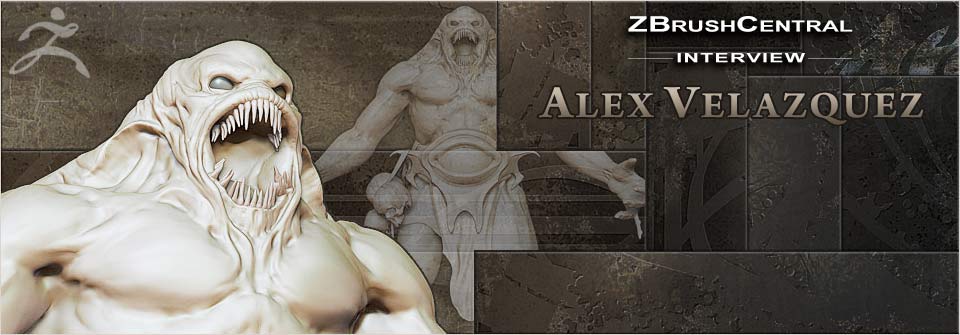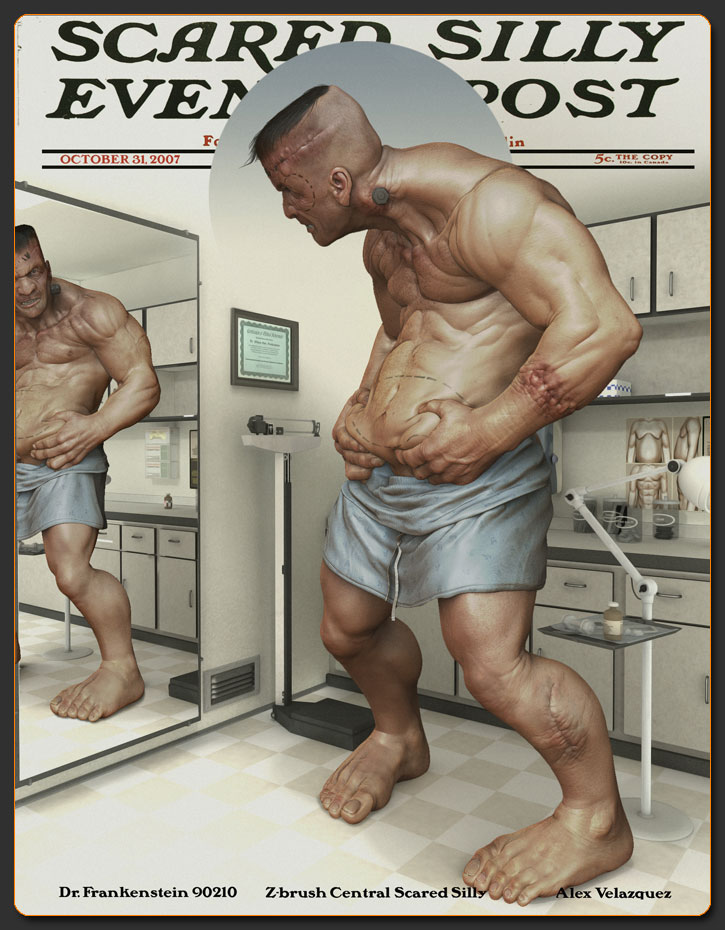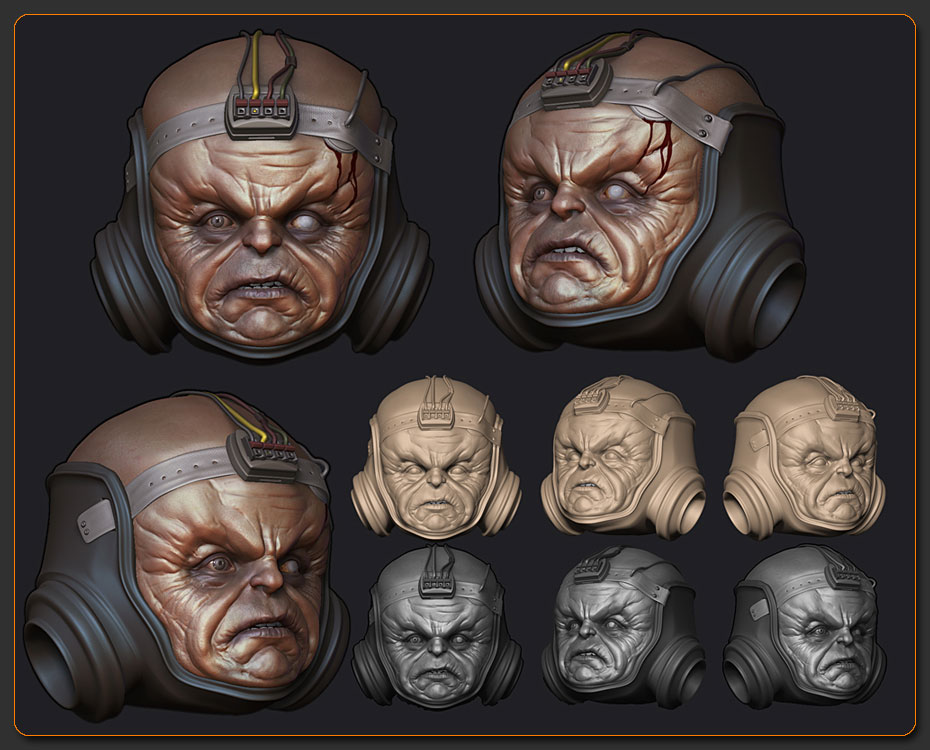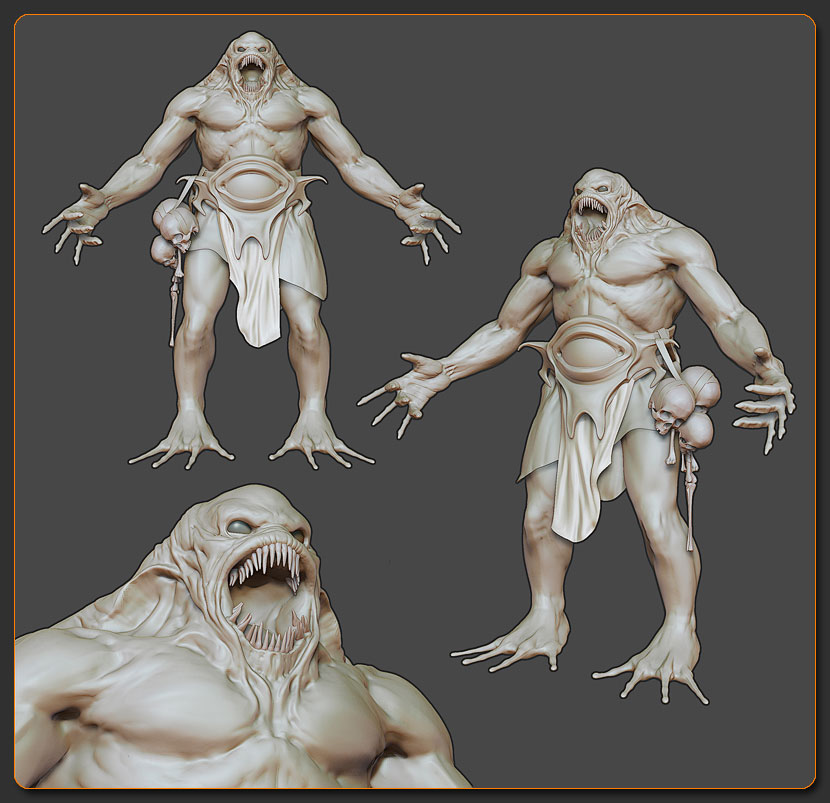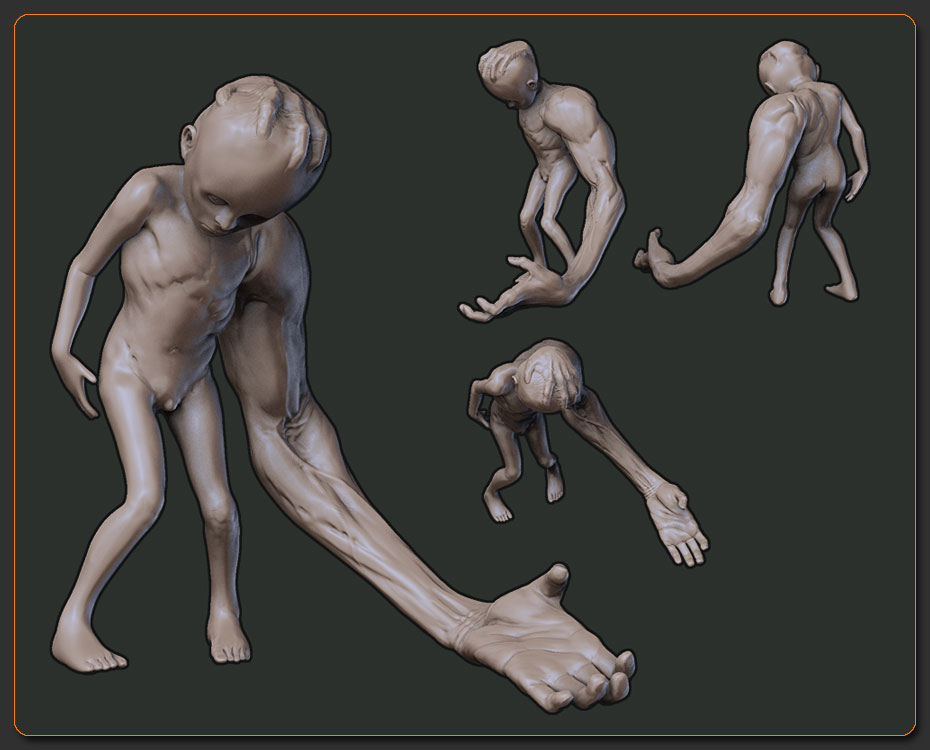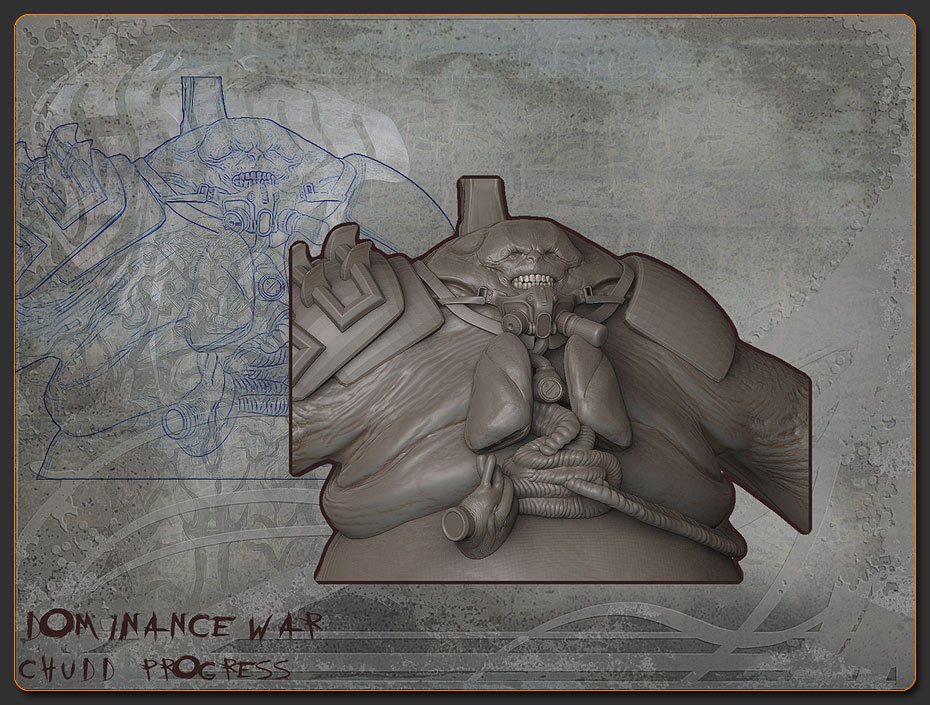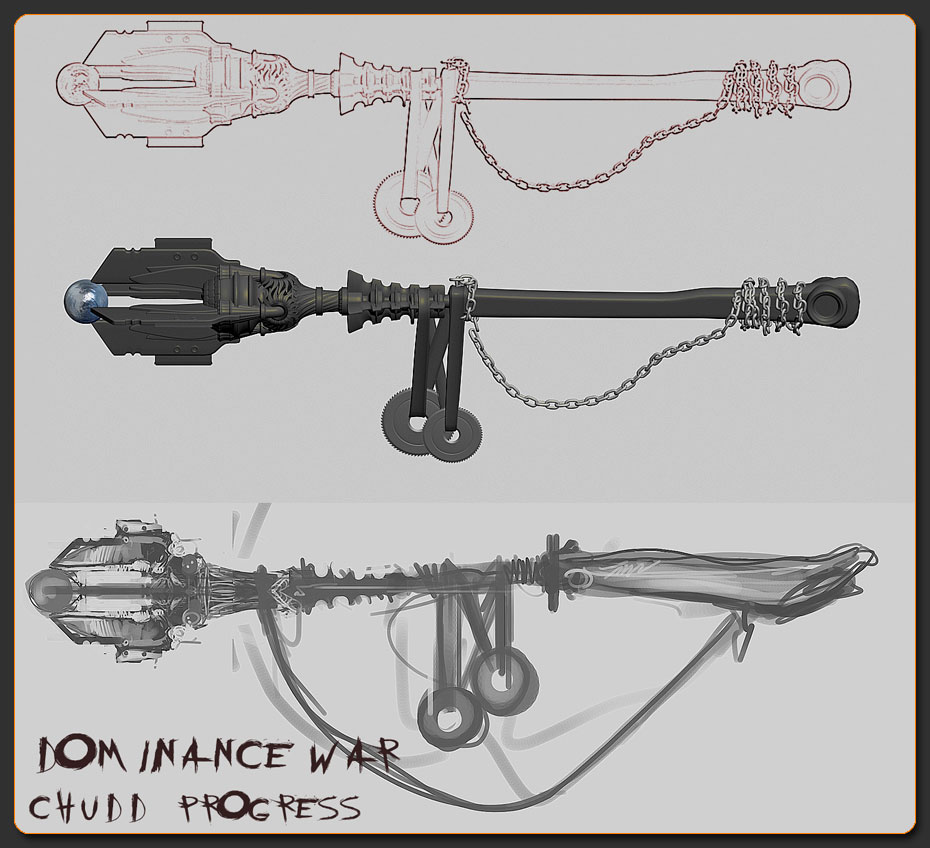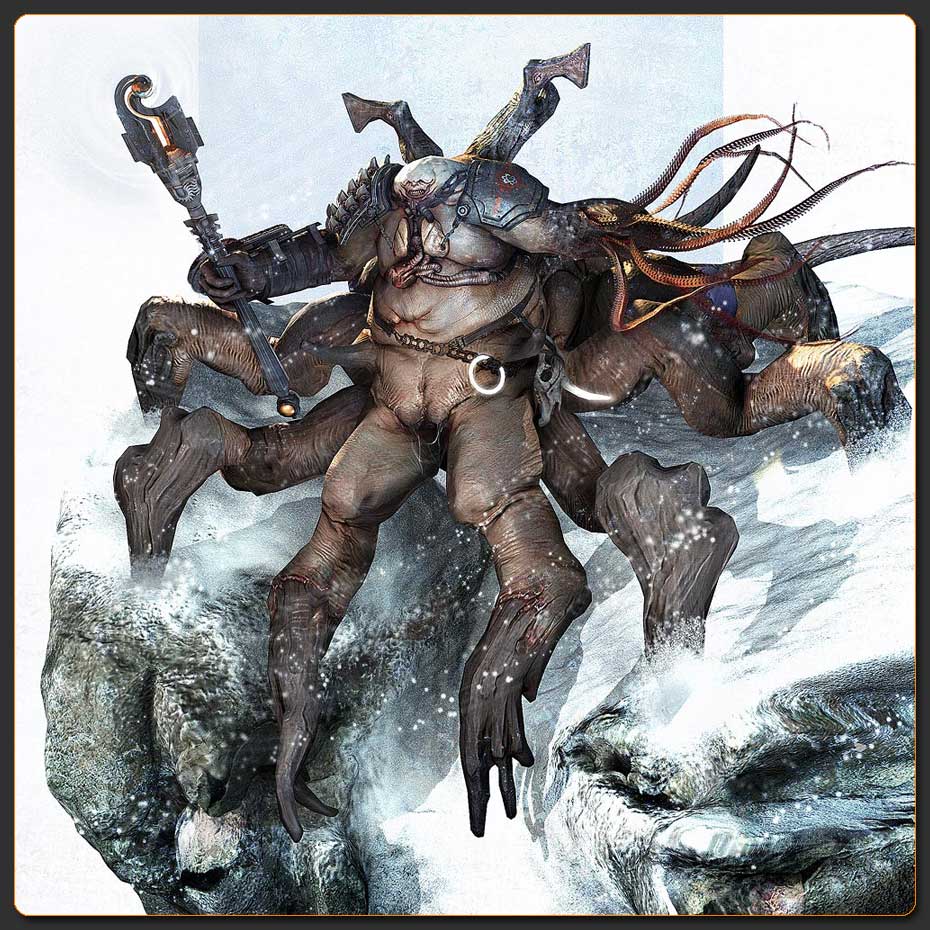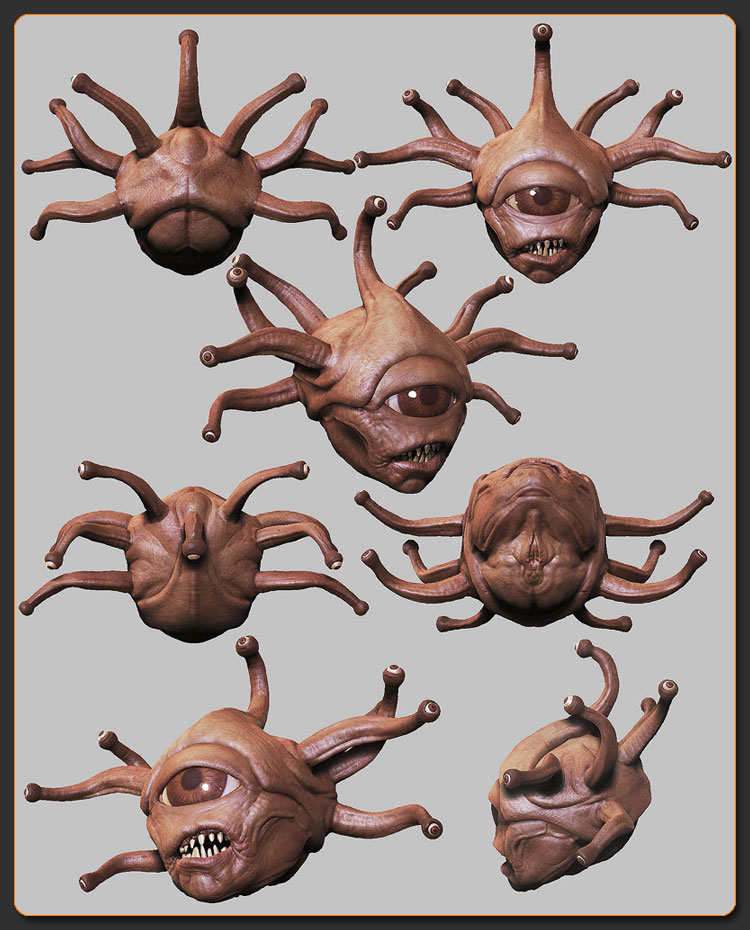[attach=96134]Banner[/attach]
On this Friday the 13th, we are actually lucky! We have been able to catch up with Alex Velazquez, coming off his recent success with the Dominance War 3 competition, where he took 4th Place in the 3D category. (For a view of the many ZBC members who participated in that prestigious contest, click here. Four of the top five winners used ZBrush!)
We hope you enjoy this interview, which gives you a good view of the man behind the art. It also has quite a bit of information about Alex’s workflow and techniques.
Hi Alex! Thanks for taking the time for this interview. You’ve certainly become something of a contest maven lately. First you won the Scared Silly contest at ZBC, and now you’ve placed fourth in the massive Dominance War 3. How does that feel?
It’s very rewarding. I enter contests to really push my own limits, and to share in the camaraderie of the event. So to place highly and get that nod from your peers really means a lot. I think more people enter for that reason than the prizes, as they rarely equal the amount of time and energy we put into the event.
[attach=96135]Scared Silly Winner[/attach]
Obviously, your terrific talent didn’t come about overnight. Could you tell us about your artistic background?
Well thank you.  I am self taught and it never came easy to me. It still doesn’t, but I’ve been drawing from a pretty young age. My first serious inspiration was a book called Fantasy Art Techniques by Boris Vallejo. I was blown away by it, and I had every page committed to memory. From that I learned the importance of life drawing. At that time I didn’t have access to live models so I would take my brother’s Adam and Eve catalogs and draw all the guys in there, replacing the elephant face underwear with skulls.
I am self taught and it never came easy to me. It still doesn’t, but I’ve been drawing from a pretty young age. My first serious inspiration was a book called Fantasy Art Techniques by Boris Vallejo. I was blown away by it, and I had every page committed to memory. From that I learned the importance of life drawing. At that time I didn’t have access to live models so I would take my brother’s Adam and Eve catalogs and draw all the guys in there, replacing the elephant face underwear with skulls.
I kept practicing all through high school and then after a couple of failed attempts at art school, life choices derailed me and I drifted away from drawing for a few years. I didn’t really see any avenue for me in art. When a very dear friend of mine was killed by a drunk driver, I realized how I was taking my time for granted. I had to get myself straight and find some way to make art a living because it was all I ever wanted to do. Around that time I started playing around with Photoshop.
I learned about this game studio in the middle of nowhere that was hiring artists, so I packed my computer, bought a Greyhound ticket, and kissed my girlfriend goodbye. Long story short I got the job, and ever since then I have been learning and practicing and pushing myself to improve.
I still take online courses on modeling, anatomy, you name it. I watch Gnomon DVDs, go to workshops, read every tutorial I come across.
[attach=96136]MODOK[/attach]
While on the subject of backgrounds, how about your personal history? Growing up, where you’ve lived and all that.
I’ve spent various amounts of time in Albany, Boston, Champaign, Pittsburgh and now Madison, Wisconsin. I actually don’t like staying in any one place for a long period of time, but for the first twenty one years of my life I grew up in Flatbush, Brooklyn, New York. It was a rough neighborhood, but I managed to get away unscathed. I never picked up the accent, but I did pick up the hard scowl. It helps late at night on the train platforms, but hasn’t served me to well in the office space.
As a pup I was into all the usual suspects: Transformers, D&D, Image comics, Star Trek, X-Files. You know; all the good stuff. Life was pretty vanilla. When I turned 21 I was big into NYC’s club scene. I would go clubbing from eleven until six in the morning, indulging every excess the lifestyle offered, then do it again the next day. Good times.
Up until very recently, you were a character modeler at Raven Software. Could you tell us about your duties there, and the titles you’ve worked on?
My duties were the standard fare for a character modeler. Make high res sculpt, low res game mesh, then render normal maps. But by the end of my tenure there it seemed all I was doing was sitting in mind numbing meetings all day. Seriously though, I do wish everyone there the greatest success. There is a deep well of talent at Raven, and I have reaped enormous rewards from being there. Raven had three of the top twenty 3D slots in the Dominance War. No other studio had that.
I’d love to tell you about the project, but I’m still under NDA so I can’t talk about it. You know how those things go.
[attach=96137]Maw[/attach]
And now you’ve broken off to go freelance. What brought that about?
It was a combination of a lot of different things. I wanted a change from studio life. I have a little girl and a baby boy, and while I was in meetings all day talking about project milestones, my babies were reaching their own milestones and I was missing it. I also fell out of love with what I was working on. If you don’t like what you’re doing or you feel like you’re spinning your wheels, you better have a pretty good reason to stay because your just hurting yourself in the long run. I didn’t have one, so I left.
I imagine it’s both exciting, and a little bit scary?
Very scary. There are so many things you need to think about, like health insurance and tax implications. And just finding work is an enormous task in itself. You have to put yourself out there, network, send out resumes, do modeling tests, and basically just sell yourself. That really goes against my grain; I guess that’s why the jobs haven’t been exactly flooding in.
I wonder if you’d let get away with a shameless plug here? 
But seriously, if I can get it to work I’d love to continue freelancing. There is no better feeling than waking up late on a Tuesday, taking your daughter to the zoo and getting ice-cream, while everyone else is at work.
[attach=96138]Baby[/attach]
Back to Raven for just a moment, how did ZBrush fit into your job there?
Well it fit like a square peg, in a… square hole. ZBrush is as integral to my pipeline as Max and Photoshop are. Beyond obviously creating high resolution sculpts for normal map projections, I’ve used ZSpheres to quickly generate proxy meshes for animation. Z-projection to transfer scan data to my base models. ZAppLink to texture, and TransPose and Matcaps to make “look and feel” renders of models for lead reviews. I can go on and on. ZBrush is definitely a solid and versatile production tool.
So let’s talk about Dominance War. What was your inspiration for Chudd? What were your personal goals for the project?
Chudd was more evolution than inspiration. I didn’t set out to create what I ended up with. I didn’t have a turnaround; I didn’t know what he looked like below the waist or from behind. He initially sat on a mass of tentacles, but as I started modeling that was the first to go. I wanted a “gas mask” but as started building it, I thought it would be more original if it were made out of organs instead of plastic. (More specifically, dead angel organs.) So there was a lot of in-the-moment decision making that brought it to life. The overall guiding principal was: is this bad ass or not.
As to my goals: first I wanted to do something different. I didn’t want any judge to be staring at my entry and someone else’s and deciding which one was executed better. I wanted it to be original.
Then I wanted to push what I could do with the limited amount of polygons. So I wanted a pretty complicated design. I ended up having to cut out some details to get it under the 9K limit.
And lastly but most importantly, I wanted to develop a character with some story to it. I wanted to keep people interested in it, to bounce from detail to detail and question it. I designed the scar on his stomach to look almost surgical. There are eyes and teeth on the protrusions on his back. The lower front extremities look like hands, but it has a very solid, almost stone-like feel to it. There is a unicorn horn hanging from the belt, and many more examples. I found it funny that many people referred to Chudd as male while others referred to it as female.
[attach=96139]Chudd Mask[/attach]
Could you go into detail about your workflow on the project? What were the ways in which ZBrush was used?
I started my modeling in 3DS Max and created very simple proxy shapes for the upper torso, stomach, and the front legs. My focus with these was not to define any detail or mass, but just give me a simple mesh with enough edge loops where I would most likely need them. I exported those into ZBrush and started sculpting. I ran into a couple of spots where I needed some more polys in a specific area, so I exported the lowest division level back into Max, added some more edge loops, brought it back to ZBrush and projected my highest subdivision onto it.
Once I had the upper torso resembling something useful, I used ZSpheres and started working out the rest of my concept. I tried various configurations on the legs. I made a mass of tentacles, tried two legs, four legs, long ones, short ones. It was really easy to move those ZSpheres around to see what worked and what didn’t.
After I settled on a design, I spent a long time sculpting. For this I was using primarily the standard, smooth, inflate, and mallet fast brushes. New details like teeth and armor were modeled in Max and merged into the mesh.
I also textured the character in ZBrush first. I used AUV mapping and just painted base textures. I did a little ZAppLink work, but not too much. I transferred the vertex colors to a 2048 texture. Each segment of the character had its own texture page.
Then came the low res mesh. I found the fastest way of building this was to export out my lowest subdivision mesh. This became my base low poly. Then using the retopology tool in ZBrush I only drew the topology that needed to be specific. Like a chiseled edge, or the loops around the mouth. I exported that specific topology and the base low poly into Max, welded them together finessed them a little, and brought it back into ZBrush. I merged the new low poly into the high res sculpt and ran a Project All on it. The low snaps to the high and fits like a glove.
When it came time to create the normal maps, I exported the high res meshes into Max and used the Render to Texture function. Some of the meshes were 4 million polys, and Max would gag and die trying to import that. So I assigned polygroups to the mesh. I tried to keep each polygroup at about 300K polys, and then I exported the whole thing. When importing an obj into Max there is an option that allows you to import each polygroup as a separate mesh. This way you have a bunch of smaller more manageable, Max friendly objects.
I assigned the 2048 textures that I generated out of ZBrush onto the high poly assets, and at the same time as I was rendering the normal maps I had Max transfer the diffuse data as well.
[attach=96140]Chudd Weapon[/attach]
Is there a particular ZBrush feature that you found especially useful on this project? How so?
Other than projection which I talked about before, I suppose the TransPose tools saved me the greatest amount of time. I obviously used it while creating high poly, but when it came time to rig and pose the character I was really dreading that. I added about four bones in Max when it dawned on me: I should just pose the low poly in ZBrush! It saved me a couple of days that I would have spent creating a rig and weighting vertices.
How long did you spend on the project in total? About what percent of that would you say was ZBrush?
Far too long. I’d say 200 hours easy, and ZBrush was probably 65%-75% of the time.
What was it like participating in such an intense contest? There were a ton of entries, and you had some serious competition there!
Yes, there was a lot of great stuff going on there. And it really is a lot more grueling and intense than you would think just observing it. It is enormous the amount of time and effort you put into something like this. I stopped going to the gym during the contest because that was an hour I could spend modeling. Sometimes I would sit there starving, but couldn’t pull myself away to get in the car and go to Subway.
You are constantly checking out the competition as well. Whenever you see someone make something cool or you see an entry for the first time and it is just awesome, you curse them out in your head. Or you think, “Damn, why didn’t I come up with that?” You want to give up, and then you want to try harder. And that goes on for months. It is really physically and emotionally draining.
Or maybe there’s just something wrong with me. 
[attach=96141]Chudd Final[/attach]
Would you say it has helped you grow as an artist?
Definitely, it has. Every contest presents new challenges and provides new insight. The competitive nature and time limitations make you think outside your comfort zone. So you come up with better, faster ways of doing things.
I noticed that on your blog you mentioned how getting top row at ZBC was a personal goal of yours. I’m glad that we were able to oblige.  Seriously, though, what is your take on the ZBC community? And what keeps you coming back?
Seriously, though, what is your take on the ZBC community? And what keeps you coming back?
Yeah it was. Now I’m being interviewed, so I just scratched off the last item on my bucket list. But the ZBrush community is fantastic. There is just so much great, inspiring art on the forum. (You can tell by how fast this interview will cycle off the top row. :)) And someone is always coming up with a new script or plug-in that just keeps improving the program and making my life easier.
How did you discover ZBrush, and how long have you been using it?
I first picked it up while at Volition… I don’t know maybe 5 years ago. I was evaluating it for the company, and was on the beta team. I got a lovely watch out of it. Thanks for that, by the way.
Did you find ZBrush to be easy to learn?
Initially, I didn’t. It had a pretty steep learning curve for me, and I cursed it out a couple of times when I lost meshes to the canvas. But back when I first picked it up there were not as many resources and training videos available as there are now. It was also so different from any other application. Looking back, it was revolutionary. And it is second nature to me now.
[attach=96142]Beholder[/attach]
One of our slogans for ZBrush has been, “Be Free!” How has ZBrush accomplished that for you?
Well it has freed me from the shackles of mouse and keyboard. You know what it’s like to have your hand gripping that mouse; ten thousand clicks a day, and your other hand hovering over the Ctrl-Alt-Shift. After a while your hands start killing you. But with ZBrush, I no longer have to spend hours modeling base meshes. I can just draw some ZSpheres and go off. Modeling with a pen is much more natural and less stressful on the body. That’s probably not where you were going with that but that’s what it’s done for me.
Is there anything else you’d like to share or talk about? This is your opportunity to cover any ground at all.
Yeah, well first I want to thank you, Matthew and Pixologic for the privilege of being interviewed. I rarely take time to reflect on the road that has taken me where I am today. It was fun.
I would also like to impart some advice to the aspiring young artist who might read this interview. Learn your fundamentals. There is no alpha, brush or material that will make your work better if you don’t have a solid understanding of form and anatomy. Except maybe the bronze shader; that makes everything look good. And if you’re really serious about a life in art, you might have to give up everything and take a chance. That’s the price she sometimes requires.
Oh and I’m available for freelance work. Email me at [email protected]. Sorry, had to get that in there.
Thank you for the interview, Alex! It has been a pleasure. Anyone who would like to view the Chudd thread here at ZBC can find it by clicking here. Alex also has a blog.
Be sure to also check out our many past interviews, which can be found in the ZBrush Artist Interviews forum.
Attachments
